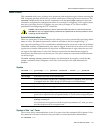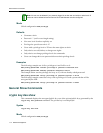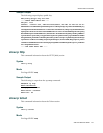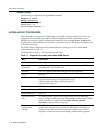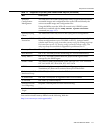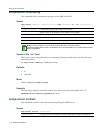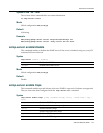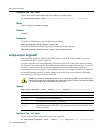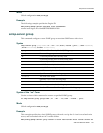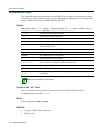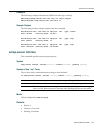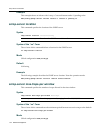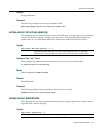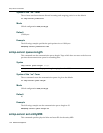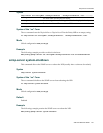
snmp-server Commands
1-20 Network Management
Syntax of the “no” Form
Thenoformofthiscommanddisablesthesendingofspecifiedtraps:
no snmp-server enable traps [[snmp [authentication]] entity | frame-relay]
Mode
Globalconfiguration:XSR(config)#
Default
Disabled
Examples
ToenableallSNMPtraps,enterthefollowingcommand:
XSR(config)#snmp-server enable traps snmp
ToenableauthenticationSNMPtrapsonly,enterthe followingcommand:
XSR(config)#snmp-server enable traps snmp authentication
snmp-server engineID
ThiscommandspecifiesavaluefortheSNMPengineontheXSR.WithinSNMPv3,usersare
localizedtothedevicebythisEngineID.
AtextualconventionforSnmpEngineIDisspecifiedbyRFC‐3411.Usingthistextualconvention,
theEngineIDiscreatedwiththeMACaddressandenterprisenumber
forEnterasys.Inorderto
transmitv3informs,theXSRrequirestheengineIDsofremoteSNMPentitieswhichthis
commandallowsyoutoconfigure.ThecommandalsoletsyouconfiguretheXSRlocalengineID.
AllengineIDsettingsmustbesetbeforeaddinguserstotheUserSecurityModel(USM)table
since
userkeysarelocalizedwiththeengineID.
Syntax
snmp-server engineID [local | remote ip-addr {udp-port port}] engineid-string
Syntax of the “no” Form
UsethenoformofthiscommandtoremovetheengineID:
no snmp-server engineID [local | remote ip-addr {udp-port port}] engineid-string
Caution: If you want to change the engine ID, do so before adding SNMP v3 users because you
cannot delete a user which is associated with a discarded Engine ID. But you can delete an SNMP
user when the Engine ID it is associated with still exists.
local
Theengine‐IDisforthelocalSNMPagent.
remote
Theengine‐IDisfortheremoteSNMPagent.
ip-addr
TheIPaddressoftheremotehost.
port
TheUDPportoftheremoteIPaddress.
engineid-
string
AuniquehexadecimalstringusedtosetthelocalengineIDaccordingtothe
algorithmdefinedinRFC‐3411.Thestringmustbeanevennumberofupto
54hexcharacters.




